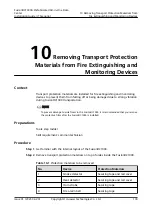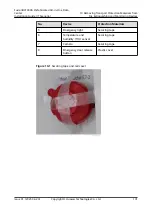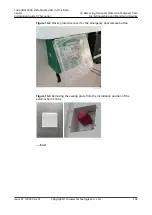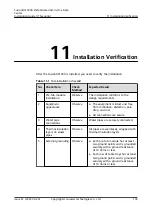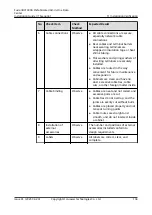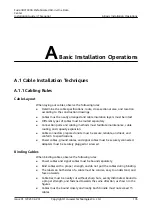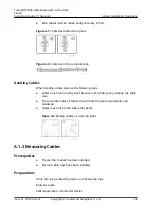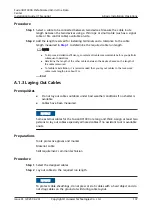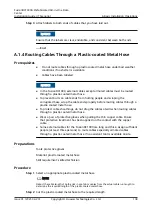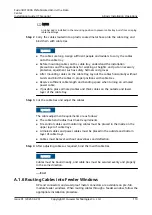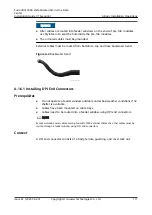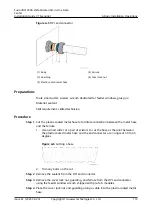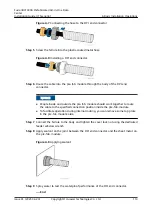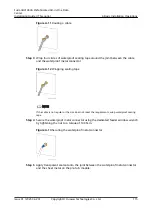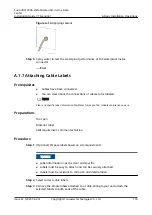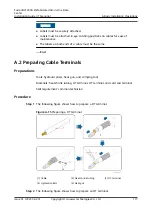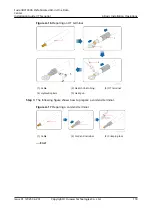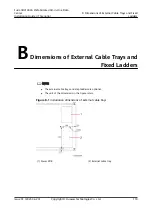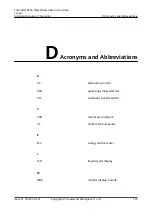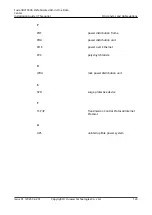
Step 3 Attach labels to both ends of cables that you have laid out.
NO TICE
Ensure that the labels are clear, endurable, and consistent between both ends.
----End
A.1.4 Routing Cables Through a Plastic-coated Metal Hose
Prerequisites
●
Do not route cables through a plastic-coated metal hose under bad weather
conditions if no shelter is available.
●
Cables have been labeled.
NO TICE
● In the FusionDC1000, external cables except armored cables must be routed
through a plastic-coated metal hose.
● To prevent burrs on cable ends from hurting people and scraping the
corrugated hose, wrap the cable ends properly before routing cables through a
plastic-coated metal hose.
● To protect cable sheathings, do not drag the cables at will when routing cables
through a plastic-coated metal hose.
● Wear a pair of protective gloves when pulling the thin copper cable. Ensure
that protective treatment has been applied on the contact with the copper
cable.
● Some external cables for the FusionDC1000 are long and thick. Assign sufficient
people (at least three persons) to route cables especially armored cables
through a plastic-coated metal hose if no assistant tool is available onsite.
Preparations
Tools: protective gloves
Material: plastic-coated metal hose
Skill requirement: skilled technician
Procedure
Step 1 Select an appropriate plastic-coated metal hose.
NO TE
Deduct the cable length of both ends in pre-fab. modules from the actual cable run length to
determine the required length of the plastic-coated metal hose.
Step 2 Cut the plastic-coated metal hose to the required length.
FusionDC1000A Prefabricated All-in-One Data
Center
Installation Guide (IT Scenario)
A Basic Installation Operations
Issue 01 (2021-04-20)
Copyright © Huawei Technologies Co., Ltd.
108







